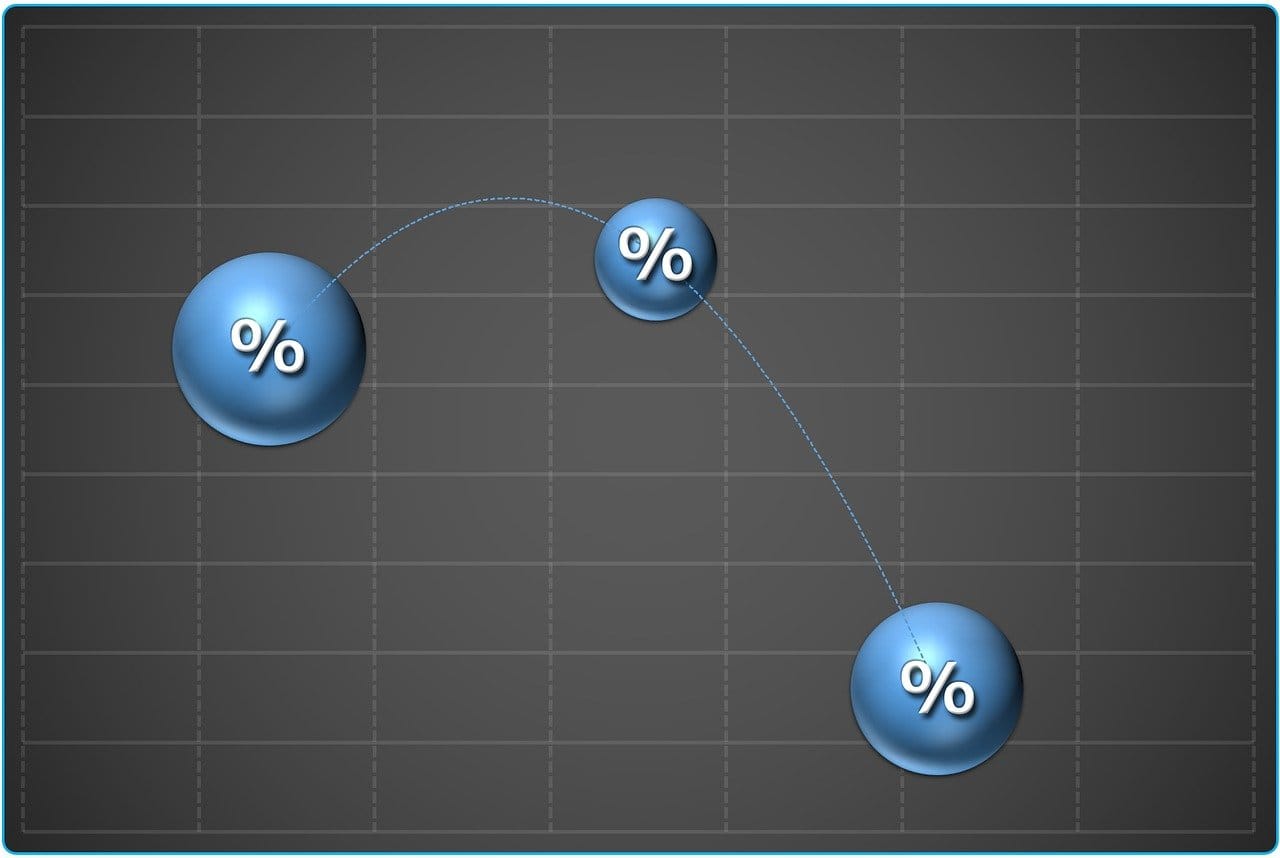A Retailer's Guide to Preparing for Market Fluctuations and Thriving Amidst Change
Navigate market fluctuations with confidence! Discover essential strategies for retailers to thrive amidst change. Stay agile, adapt, and succeed in any economic climate

As a retailer, one of the most crucial aspects of running a successful business is understanding economic forecasting. Economic forecasting involves analyzing and predicting future economic trends to make informed decisions about production, pricing, and overall business strategy. In this article, I will delve into the importance of economic forecasting for retailers and provide insights into key economic indicators, strategies for preparing for market fluctuations, adapting to economic changes, thriving amidst economic fluctuations, case studies of retailers navigating market changes, and tools and resources for economic forecasting. By the end of this comprehensive guide, you'll be equipped with the knowledge and tools to navigate the ever-changing economic landscape and position your retail business for success.
Understanding Economic Forecasting

Economic forecasting is the process of making predictions about the future state of the economy based on historical data, statistical models, and a deep understanding of economic indicators. For retailers, economic forecasting plays a pivotal role in decision-making processes, such as inventory management, pricing strategies, and expansion plans. By analyzing economic data and trends, retailers can anticipate changes in consumer spending habits, inflation rates, and overall market conditions, allowing them to make proactive adjustments to their business operations. Understanding economic forecasting empowers retailers to mitigate risks, capitalize on opportunities, and stay ahead of the curve in a dynamic retail landscape.
Importance of Economic Forecasting for Retailers
The importance of economic forecasting for retailers cannot be overstated. In an industry where consumer behavior, market demand, and purchasing power are heavily influenced by economic conditions, having a clear understanding of the economic forecast is indispensable. Economic forecasting enables retailers to optimize their supply chain management by aligning inventory levels with projected demand, thereby minimizing the risk of overstocking or stockouts. Moreover, it allows retailers to fine-tune their pricing strategies in response to anticipated changes in inflation, interest rates, and exchange rates, ensuring competitiveness and profitability. By leveraging economic forecasting, retailers can make informed decisions that drive sustainable growth and resilience in the face of economic fluctuations.
Key Economic Indicators for Retailers
For retailers, keeping a close eye on key economic indicators is essential for accurate forecasting and strategic planning. Some of the critical economic indicators that directly impact the retail sector include consumer spending, unemployment rates, GDP growth, inflation rates, and interest rates. Consumer spending serves as a barometer of consumer confidence and purchasing power, influencing retail sales and demand for goods and services. Unemployment rates affect disposable income and consumer behavior, thereby influencing retail sales volumes. GDP growth reflects the overall economic health and consumer sentiment, providing insights into the future direction of the retail market. Inflation rates and interest rates directly impact the cost of goods, borrowing costs, and consumer spending patterns, shaping the competitive landscape for retailers. By monitoring these key economic indicators, retailers can anticipate market shifts and proactively adjust their business strategies.
Strategies for Preparing for Market Fluctuations
In a dynamic economic environment, retailers need to implement proactive strategies to prepare for market fluctuations and mitigate potential risks. One effective strategy is diversifying the product mix to offer a range of price points and cater to varying consumer preferences during economic downturns. By diversifying the product offerings, retailers can adapt to shifting consumer spending patterns and maintain revenue streams across different market segments. Additionally, implementing agile pricing strategies that are responsive to changes in economic conditions can help retailers stay competitive and preserve profit margins. Furthermore, establishing strong supplier relationships and supply chain resilience can buffer retailers against supply chain disruptions caused by economic fluctuations, ensuring continuity in product availability and customer satisfaction. By embracing these strategies, retailers can fortify their business against market volatility and emerge stronger in the face of economic challenges.
Adapting to Economic Changes

Adaptability is a cornerstone of success for retailers navigating economic changes. As economic conditions evolve, retailers must be agile in adjusting their business operations to align with the shifting landscape. Embracing data-driven decision-making processes powered by economic forecasting insights enables retailers to adapt their inventory management, pricing strategies, and marketing efforts in response to changing consumer behaviors and market conditions. Moreover, leveraging technology and analytics to gain real-time visibility into consumer trends and preferences empowers retailers to pivot their product offerings and promotional strategies swiftly. By fostering a culture of adaptability and agility, retailers can thrive amidst economic changes and position themselves as resilient market players.
Thriving Amidst Economic Fluctuations
While preparing for market fluctuations is essential, thriving amidst economic fluctuations requires retailers to proactively seek out opportunities and innovate in response to changing consumer needs. One way for retailers to thrive amidst economic fluctuations is to invest in customer experience enhancements that differentiate their brand and foster customer loyalty. By offering personalized services, seamless omnichannel experiences, and value-added benefits, retailers can create enduring relationships with customers, regardless of economic conditions. Additionally, harnessing the power of data analytics and consumer insights allows retailers to identify emerging trends and capitalize on niche market segments, driving innovation and growth. By continuously evolving and adapting to the evolving economic landscape, retailers can not only weather economic fluctuations but also emerge as industry leaders.
Case Studies of Retailers Navigating Market Changes
To illustrate the real-world impact of economic forecasting and strategic adaptation, let's examine two case studies of retailers successfully navigating market changes. Case Study 1: XYZ Clothing, a mid-sized apparel retailer, leveraged economic forecasting insights to adjust its inventory mix and pricing strategies during a period of economic downturn. By reallocating inventory towards affordable essentials and implementing targeted promotions, XYZ Clothing maintained sales growth and customer loyalty, outperforming competitors. Case Study 2: ABC Electronics, a consumer electronics retailer, embraced agile pricing strategies and diversified its product offerings to capture new market segments amidst economic uncertainty. By responding swiftly to economic changes, ABC Electronics sustained profitability and market share, positioning itself as a resilient player in the electronics retail industry.
Tools and Resources for Economic Forecasting
In the digital age, retailers have access to a plethora of tools and resources for economic forecasting to inform their business decisions. Leveraging advanced analytics platforms and forecasting software enables retailers to harness the power of big data and predictive modeling to anticipate market trends and consumer behaviors. Additionally, collaborating with professional economists, industry analysts, and market research firms provides retailers with expert insights and macroeconomic perspectives that enrich their forecasting capabilities. Moreover, subscribing to economic publications, attending industry conferences, and participating in economic forums equips retailers with a holistic understanding of economic trends and best practices for navigating market fluctuations.
Economic Forecasting Services for Retailers
For retailers seeking comprehensive economic forecasting solutions, partnering with specialized economic forecasting services can offer invaluable support in navigating the complexities of the economic landscape. These services provide retailers with tailored economic forecasts, trend analysis, and scenario planning to optimize their business strategies and capitalize on emerging opportunities. Furthermore, economic forecasting services often offer custom research reports, industry benchmarks, and strategic advisory services to guide retailers in making informed decisions that drive sustainable growth and profitability. By leveraging the expertise of economic forecasting services, retailers can gain a competitive edge and build resilience in the face of economic uncertainties.
In conclusion, economic forecasting is an indispensable tool for retailers to prepare for market fluctuations and thrive amidst change. By understanding economic forecasting, recognizing the importance of key economic indicators, implementing proactive strategies, adapting to economic changes, and thriving amidst economic fluctuations, retailers can position their businesses for sustained success in a dynamic retail landscape. Leveraging case studies of retailers navigating market changes, tools and resources for economic forecasting, and economic forecasting services, retailers can equip themselves with the knowledge and capabilities to navigate the ever-changing economic landscape with confidence. By embracing economic forecasting as a strategic imperative, retailers can not only weather economic uncertainties but also emerge as resilient and innovative industry leaders




